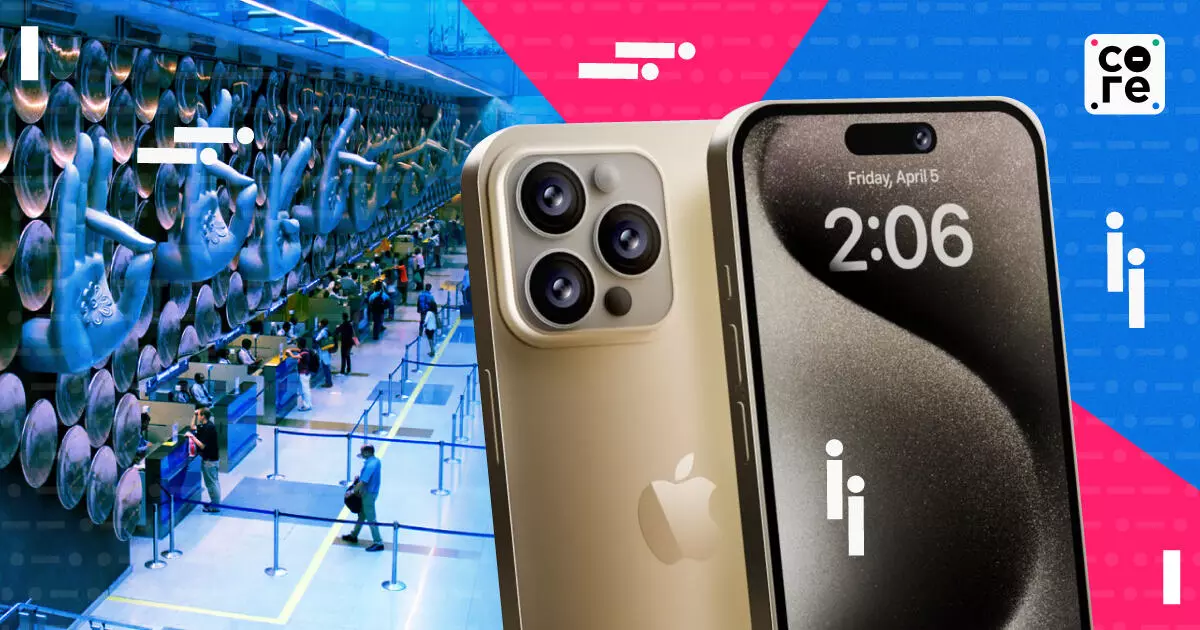
India Needs To Shed Its Protectionist Duty Structure
The Indian government and Apple proudly announced iPhone 16 production, but import duties make smuggling or importing cheaper.

For decades, it was a standing joke that the made-in-India watches by HMT, formerly known as Hindustan Machine Tools, were cheaper in Dubai. What’s sadder is that the watches were made by a company fully owned by the Indian government. This was made possible by India’s taxation structure.
Since time immemorial local taxes have been so high that once exported to low-tax countries like Dubai, goods become cheaper. HMT watches are still very much around in case you want to buy them and so is India’s inverse duty structure that makes buying ‘made in India’ goods cheaper overseas.
The latest example is the iPhone 16. The Indian government and Apple have announced with much pride that the iPhone 16 and iPhone 16 Pro are being made in India for export. What they haven’t mentioned is that the duty structure makes it cheaper to import these phones or better still to smuggle them. The newest iPhones, possibly made in India, are going around the world and coming back to India to be sold in the grey markets for a cheaper price.
Last week, Indian customs said they seized 12 iPhone 16 Pro Max devices from four passengers allegedly attempting to smuggle them into India. The passengers travelled on an IndiGo flight from Dubai. Another 26 iPhone 16 Pro Max phones were seized from a woman travelling into India from Hong Kong. This was shortly followed by Apple’s announcement that it will launch the made-in-India iPhone 16 Pro and Pro Max series of devices this month. Perhaps the enterprising smugglers could have waited for a few more weeks. But then, time and tide wait for no Apple fans.
Of course, these devices would cost more in India. The price difference between an iPhone bought in Dubai or Hong Kong versus one bought officially in India is around Rs 30,000. So a smuggler could make around Rs 10,000 per phone and still offer a Rs 20,000 discount on the price in an Apple store. Many would jump for a value proposition like that.
The larger question is why is this happening even today? India’s duty structure is still high and protectionist, no different from the pre-liberalisation glory days. Our tariffs and duties have been going up too. Ten years ago average tariffs were at 13%, today they are at 18%, among the highest in the world and double that of countries like China and Vietnam.
Protests by companies like Foxconn, who make Apple products in India, have brought down duties on components from 20% to 15%. Our tariff setting seems to be governed by the moral of taxing gold imports versus the practicality of understanding how flows work in a high tariff environment and what we can and cannot do. We hiked customs duties on gold in the last decade only to see smuggling rise and then finally reduced them in June in an apparent realisation that high duties don’t help.
If we truly want to become a globally competitive manufacturer and thus create more jobs, we have to reduce tariffs on final products and components. Otherwise, people will continue to buy made-in-India products in Dubai and Hong Kong, or after they have been smuggled back from these countries.
The Indian government and Apple proudly announced iPhone 16 production, but import duties make smuggling or importing cheaper.
Zinal Dedhia is a special correspondent covering India’s aviation, logistics, shipping, and e-commerce sectors. She holds a master’s degree from Nottingham Trent University, UK. Outside the newsroom, she loves exploring new places and experimenting in the kitchen.

